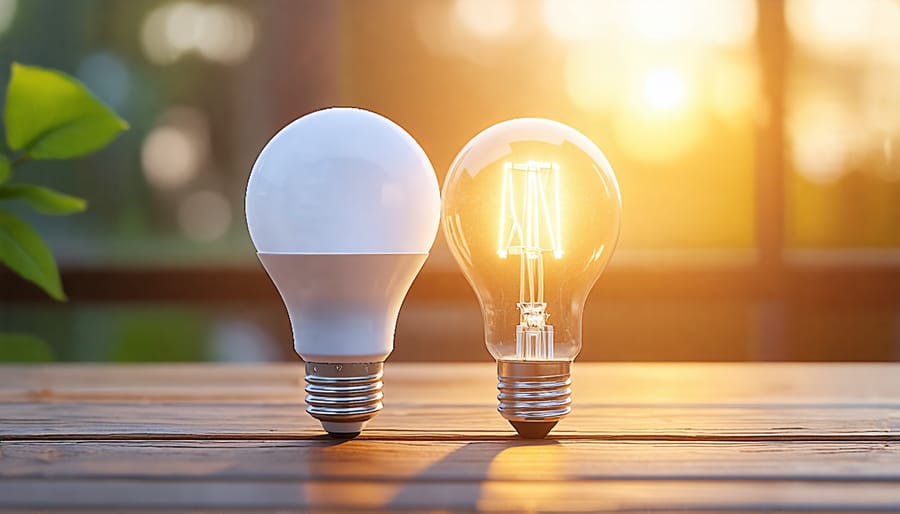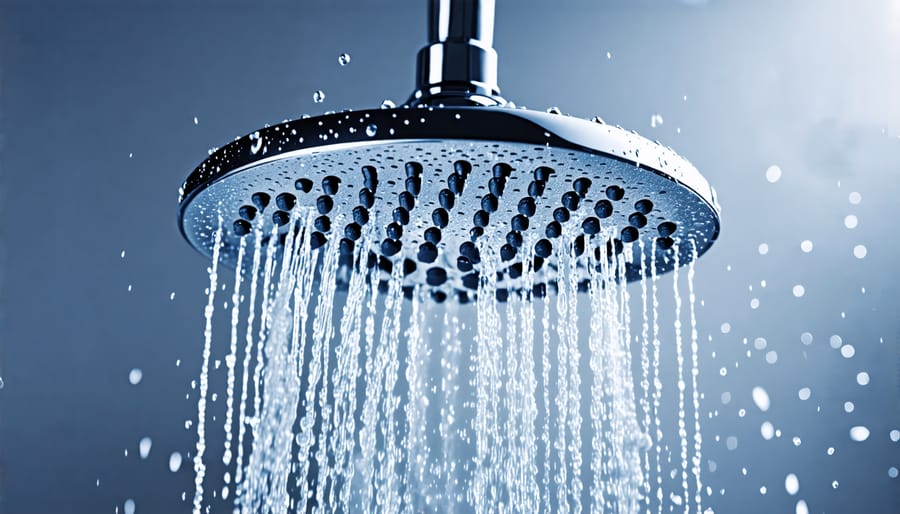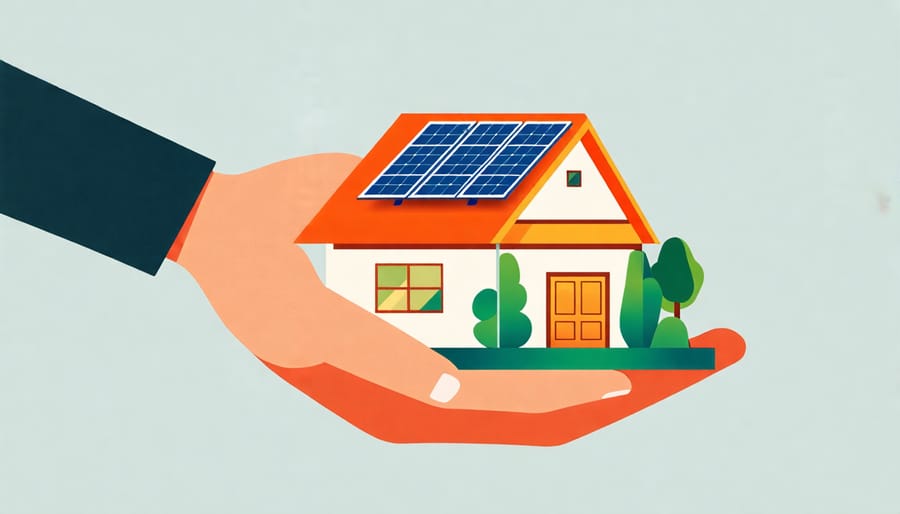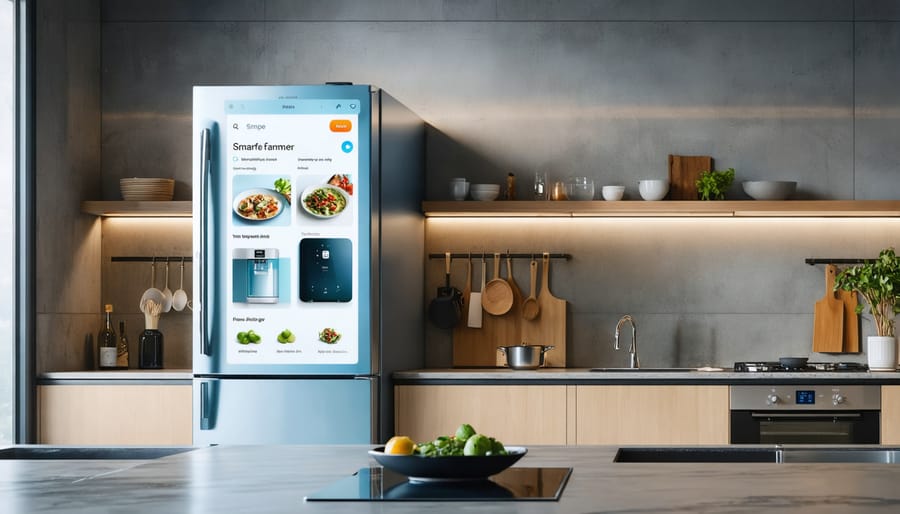Install LED lighting to reduce energy consumption by up to 90% compared to incandescent bulbs, slashing your electricity bills and creating an energy-efficient home. Upgrade to low-flow showerheads and dual-flush toilets to conserve water without sacrificing comfort or convenience. Replace aging appliances with ENERGY STAR certified models that use 10-50% less energy and water, delivering substantial savings over their lifespan while reducing your environmental impact. Boost your home’s energy efficiency by installing high-quality insulation in walls, attics, and crawl spaces to minimize heat transfer and maintain stable indoor temperatures year-round. Consider investing in solar panels or a small wind turbine to generate clean, renewable power on-site, potentially eliminating your reliance on the grid and earning tax credits or utility rebates.
Energy-Efficient Lighting
LED Bulbs vs. Traditional Incandescents
LED bulbs are a game-changer for energy-efficient lighting. Compared to traditional incandescents, LEDs use up to 90% less energy and last 25 times longer. While they may cost more upfront, the long-term savings are substantial. Over its lifespan, a single LED can save you $100-$200 in energy costs. They also emit less heat, reducing cooling needs. Making the switch is as simple as replacing your old bulbs – no rewiring required. With a wide range of brightness levels and color temperatures available, you can find the perfect LEDs to enhance your home’s ambiance while shrinking your carbon footprint.

Smart Lighting Systems
Smart lighting systems are a simple yet impactful way to make your home more sustainable. By installing LED bulbs and using sensors, timers, and dimmers, you can significantly reduce energy waste from lighting. Motion sensors ensure lights only turn on when needed, while timers and dimmers let you customize brightness and duration. Many smart lighting systems can be controlled remotely via smartphone apps, providing added convenience. With features like voice control and integration with other smart home devices, these systems make it easy to optimize your lighting for maximum efficiency and comfort. Switching to a smart lighting setup is an accessible, cost-effective way to lower your energy bills and environmental footprint.

Low-Flow Plumbing Fixtures
Water and Cost Savings
By installing low-flow showerheads, faucets, and toilets, you can significantly reduce your home’s water consumption without sacrificing comfort or convenience. These water-efficient fixtures can save a family of four up to 34,000 gallons of water per year, which translates to nearly $200 in annual savings on water bills. Additionally, by fixing leaky faucets and pipes, you can prevent the waste of up to 10,000 gallons of water annually. Upgrading to an ENERGY STAR certified dishwasher can cut your water usage by 3,870 gallons over its lifetime while also saving you $130 in utility costs. Making these simple, sustainable changes not only benefits the environment but also puts money back in your pocket.
Installation Tips
When installing sustainable solutions in your home, it’s important to consider factors like compatibility with existing systems, required maintenance, and potential long-term savings. Many solutions, such as low-flow fixtures and LED lighting, are simple DIY projects that require minimal upfront costs and expertise. Others, like solar panels or smart home systems, may involve professional installation and higher initial investments but can lead to significant energy savings over time. Always consult manufacturer guidelines and, if needed, seek professional advice to ensure proper installation and optimal performance of your chosen sustainable solutions.
Energy-Efficient Appliances
ENERGY STAR Label Explained
The ENERGY STAR label is a trusted symbol for energy efficiency, backed by the U.S. Environmental Protection Agency. When you see this label on a product, it means it meets strict energy efficiency guidelines set by the EPA. ENERGY STAR certified products, such as appliances, electronics, and even homes, use less energy than their standard counterparts, which can lead to significant savings on your utility bills. By choosing ENERGY STAR labeled products, you are not only saving money but also reducing your environmental impact by minimizing greenhouse gas emissions and conserving our natural resources. Look for the ENERGY STAR label to make a smart, sustainable choice for your home.
Long-Term Savings
While energy-efficient appliances may have higher upfront costs, they can lead to significant long-term savings on your utility bills. Calculate the potential return on investment for upgrading major appliances like refrigerators, dishwashers, and washing machines. Look for the Energy Star label, which certifies appliances that use 10-50% less energy than standard models. Over their lifespan, these efficient appliances can save you hundreds of dollars. Plus, many utility companies offer rebates and incentives for purchasing energy-efficient models, further offsetting initial costs. When your current appliances reach the end of their life, reinvest those savings into even more efficient replacements for compounding long-term benefits to both your wallet and the planet.
Sustainable Insulation Materials
R-Value Comparison
When comparing insulation, R-value measures resistance to heat flow – the higher the R-value, the better the insulating power. Sustainable options like sheep’s wool, cotton, and cellulose (recycled paper) offer R-values comparable to fiberglass and mineral wool, the traditional go-tos. For example, sheep’s wool boasts an R-value of 3.5-3.8 per inch, while fiberglass is rated at 2.2-2.7. Not only do eco-friendly alternatives measure up performance-wise, but they also bring added benefits: wool and cotton are moisture-resistant, limiting mold growth, while cellulose is treated with borate for fire and pest resistance. Denim insulation provides sound dampening properties. Though sustainable materials may come at a slightly higher price point initially, their longevity and green factor make them a wise investment for both your home and the planet.
Environmental Benefits
Choosing eco-friendly insulation materials like recycled denim, sheep’s wool, or cork can significantly reduce your home’s environmental impact. These sustainable options often have a lower carbon footprint compared to traditional insulation materials, as they require less energy to manufacture and transport. Many green insulation materials are also biodegradable, meaning they’ll break down naturally over time without releasing harmful chemicals into the environment. By opting for these earth-friendly alternatives, you can keep your home well-insulated while minimizing your contribution to landfill waste and greenhouse gas emissions. Plus, you’ll enjoy the added benefits of a quieter, more comfortable living space!
Solar Panels

Cost and Incentives
While sustainable home solutions often have higher upfront costs, they can lead to significant long-term savings on utility bills. Many eco-friendly upgrades, such as energy-efficient appliances and LED lighting, pay for themselves over time through reduced energy consumption. Additionally, various tax incentives and rebates are available for homeowners who invest in sustainability. For example, installing solar panels or a geothermal heat pump may qualify you for federal tax credits and state or local incentives. Energy-efficient windows, doors, and insulation can also be eligible for tax breaks. Check with your local utility company and government agencies to learn about current programs that can offset the initial expenses of going green. Remember, while the upfront investment may be higher, sustainable solutions are a smart financial choice in the long run, providing ongoing savings and boosting your home’s value.
Environmental Impact
Installing solar panels can significantly reduce your home’s reliance on fossil fuels. By generating clean, renewable energy from the sun, solar power decreases the amount of electricity you need to pull from the grid, which is often generated by burning coal or natural gas. This directly lowers your household’s carbon footprint. Over its lifetime, a typical residential solar panel system can eliminate 3-4 tons of carbon emissions each year—equivalent to planting over 100 trees annually. Making the switch to solar not only benefits the environment but also helps combat climate change for a more sustainable future.
By implementing these sustainable solutions in your home, you can create a more eco-friendly living space that helps conserve resources and reduce your environmental impact. From simple changes like switching to LED light bulbs and low-flow fixtures to larger investments such as energy-efficient appliances and renewable energy systems, every step counts. Not only will you be doing your part for the planet, but you’ll also enjoy the added benefit of lower utility bills and long-term cost savings. Embrace the opportunity to make a positive change in your home and inspire others to do the same. Start small, and gradually work towards a more sustainable lifestyle. With dedication and mindfulness, you can transform your home into a haven of sustainability that benefits both you and the environment for years to come.





